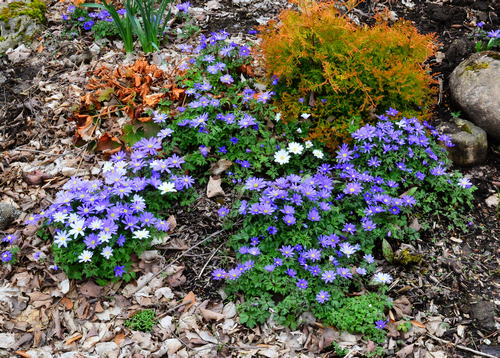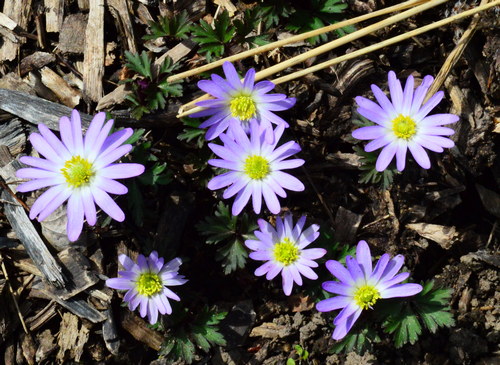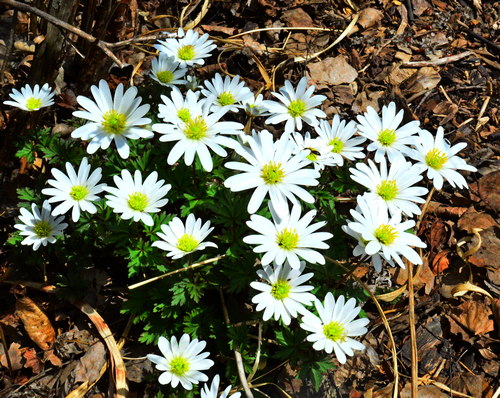Plant of the Month for February, 2020

Anemone Blanda
(Uh-NEM-oh-nee BLAN-duh)
General Information:
Anemone blanda is a fairly common spring bulb that produces a big display of flowers. It is low growing and can be tucked under trees for a nice display, or grown with other small spring bulbs like Muscari. It is best purchased and planted in fall but you can find pots of it in spring at some nurseries.

Anemone blanda:photo by Robert Pavlis
This plant is called a bulb, a corm and a tuber. It is black, irregularly shaped and does not look much like anything. I suspect that it is properly called a tuber. They are usually sold very dry and it is a good idea to soak them overnight before planting. You really can’t tell which way is up, so just drop them in a planting hole. Bulbs, corms and tubers don’t really care if they are planted upside down.

Anemone blanda:photo by Robert Pavlis
They grow well in full sun but prefer part shade in hot climates. The common colors are blue, pink and white. I especially like the clear white color.

Anemone blanda:photo by Robert Pavlis
Their common names include windflower and Grecian windflower, although they don’t do as well in a windy location. They will naturalize over time. At the end of their growing season, which is around mid-summer, the leaves die back and they go underground.
Life Cycle: tuberous perennial
Height: 12cm (5in)
Bloom Time: spring
Natural Range: Southeast Europe, Cyprus, Turkey, Caucasus
Habitat: sunny dry slopes
Synonyms: n/a
Cultivation:
Light: sun to part shade
Soil: well drained
Water: average, moist during the growing season.
USDA Hardiness Zone: 5 - 10
Propagation: seed, division
Seedex availability (ORG&HPS annual Seed Exchange): occasionally
